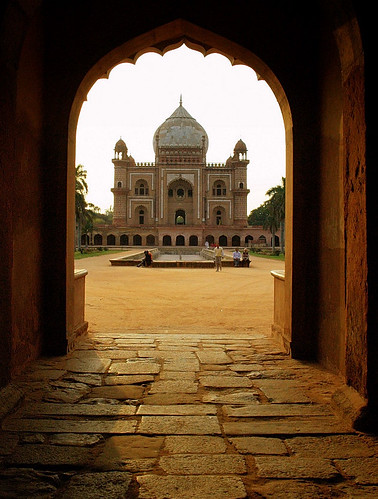
Safdurjung Tomb
New Delhi, India
Nikon D70
Featured on nikonstunninggallery
Safdarjung's Tomb is an outstanding example of Mughal Architecture. It represents the last phase of Mughal style of architecture, Safdarjung's Tomb stands in the centre of beautiful garden. Built in 1753 by Nawab Shuja-ud-Daula to house the remains of his father, who was a minister in the Mughal court, the tomb is referred to as the "last flicker in the lamp of Mughal architecture." It shows how the grace and simplicity of the Mughals had been overtaken by decadence. The tomb also has a mosque.
Nawab Shuja-ud-daulah, built the memorial in the memory of his father Mirza Muqim Abul Mansur Khan, popularly known as Safdarjung (1739-54). Safdarjung was the governor of the province of Awadh under Muhammad Shah (1719-48).
On either side are beautiful pavilions known as "Moti Mahal" or the pearl palace, "Jangli Mahal" or the sylvan palace and "Badshah Pasand" or the emperor's favorite. The mausoleum built with red sandstone and buff stone is faced with marble and stands squarely in the middle of a garden. There are two graves here, one of Safdarjung and the other presumably his wife's. The square central chamber of the mausoleum is surrounded by eight rooms all around. All the apartments, except the corner ones are rectangular in shape, the corner ones being octagonal. The dome of the tomb rises from a sixteen-sided base. The tomb has been criticized for its weakness in proportions hence a lack of balance in its make-up.
___________/|\___________






2 comments:
wonderful.....
super!
reminds me of all those days i spent at dilli;)thnx!
Post a Comment